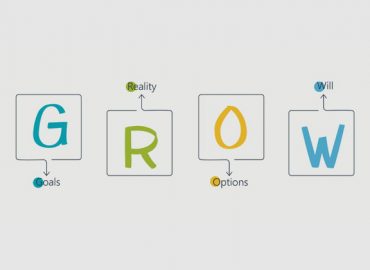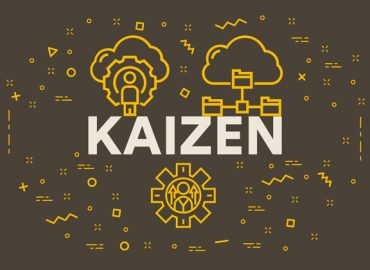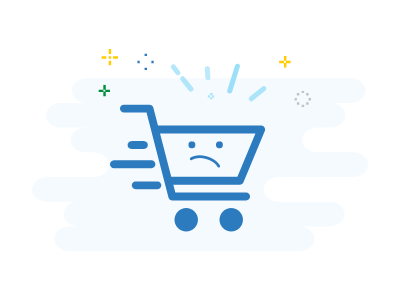Lean Six Sigma is an integrated business strategy aimed at boosting efficiency and quality through process enhancement. It achieves this by pinpointing and eliminating the sources of defects and reducing variability in both manufacturing and business operations. It integrates the waste-reduction principles of Lean manufacturing with the process improvement methods of Six Sigma. This introductory guide explores the principles of Lean Six Sigma and outlines how they can be applied to streamline business processes, offering a pathway to transforming operations for maximum efficiency.
Understanding Lean
Lean is built on five core principles that guide businesses in optimising their process efficiency. These principles are:
- Define Value: Understanding what value means to the customer is the foundation of Lean. It allows businesses to focus their improvement efforts on processes that increase customer satisfaction.
- Map the Value Stream: This process entails examining the existing workflow to pinpoint and remove inefficiencies, guaranteeing that each stage delivers value to the customer.
- Create Flow: By ensuring that work processes flow smoothly without interruptions, delays, or bottlenecks, businesses can deliver value more efficiently.
- Establish Pull: This principle focuses on producing only what the customer needs and when needed, thus reducing excess production and inventory.
- Pursue Perfection: Leanis an ongoing continuous improvement process where businesses strive to eliminate waste and continuously reduce variability in their processes.
Implementing Lean Six Sigma
The implementation of Lean Six Sigma involves several key steps:
1. Commitment from Leadership
The successful implementation of Lean Six Sigma begins with solid commitment and support from the organisation’s leadership. This includes providing resources, setting strategic directions, and fostering a culture of continuous improvement.
2. Training and Certification
Investing in Lean Six Sigma training and certification for team members is crucial. This ensures they have the necessary skills and knowledge to identify, analysze, and improve processes using Lean Six Sigma methodologies.
3. Selecting Projects
Choose projects that clearly impact the organisation’s goals and customer satisfaction. Projects should be selected based on their potential to improve efficiency, reduce costs, and eliminate waste.
4. Apply DMAIC Methodology
DMAIC methodology can be borrowed from Six Sigma and applied in a Lean Six Sigma project to combine the Lean principles mentioned above with this structured methodology to gain more from the combination of Lean and Six Sigma through the following phases:
4.1. Define Phase
Clearly define the problem, goals, and scope of the project. This phase involves understanding customer needs and specifying the project objectives.
4.2. Measure Phase
Collect data to establish baselines for the process being improved. This helps in understanding the current performance level and identifying areas for improvement.
4.3. Analyse Phase
Examine the data to pinpoint the underlying reasons for inefficiencies and inconsistencies. Utiliszing tools such as cause-and-effect diagrams and process mapping can aid in this phase.
4.4. Improve Phase
Create and execute strategies to address and remove the fundamental issues discovered during the Analysze phase. This may involve redesigning processes, eliminating unnecessary steps, and incorporating best practices.
4.5. Control Phase
Establish controls to sustain the improvements. This includes setting up monitoring systems, creating standard operating procedures, and training employees to follow the new processes.
Maintaining Lean Six Sigma Achievements
Maintaining the achievement of the Lean Six Sigma project requires ongoing effort and commitment. This can be achieved through:
- Continuous Monitoring: Consistently evaluate the performance of enhanced processes to maintain their benefits over the long term.
- Ongoing Training: Invest in training and development to deepen the organiszation’s Lean Six Sigma capabilities.
- Culture of Improvement: Foster a culture that encourages innovation, values feedback, and supports continuous improvement.
- Regular Reviews: Conduct periodic reviews of Lean Six Sigma practices and projects to identify opportunities for further improvement.
Conclusion
Lean Six Sigma offers a structured approach to process improvement that can significantly enhance efficiency, quality, and customer satisfaction. Businesses can systematically eliminate waste and reduce variability by understanding and applying its core principles. Implementing and maintaining Lean Six Sigma principles requires commitment, discipline, and a culture of continuous improvement. With these elements, organisations can achieve transformative results, ensuring their operations are streamlined for maximum efficiency.
CBIS, is a boutique training and consulting firm that works collaboratively with business owners and line managers to achieve compliance and excellence by drawing on cross-disciplinary expertise in business improvement frameworks such as Lean and Six Sigma. We are experts in Lean Six Sigma Training, Coaching and Consulting and have worked extensively on a range of business efficiency issues.
Do you need Lean and Six Sigma for your Business? CBIS can help. Contact our Expert Coaches and Consultants today.
What is DFSS? Design for Six Sigma is used to perfect products and processes before...
What is DOE? In general usage, design of experiments (DOE) or experimental design is the...
What is coaching? Coaching is a cyclical process of elevating the other persons’ awareness of...
Lean Six Sigma is a powerful method for improving existing products, processes and services. One...
Introduction In our lean six sigma projects, too often we spend all our time on...
What is a Kaizen Blitz? Kaizen definition has been Americanised to mean “Continual Improvement.” A...
Overview Layout planning is one of the most important aspects of Lean manufacturing. In some...
As global competition continues to grow, the pressure to improve becomes more and more intense....
What is SMED? SMED is the term used to represent setup time and is often...
Lean Six Sigma projects can lead to a rewarding experience and immense benefits for an...
Introduction Value Stream Map (VSM) is a diagram of every step involved in the material...
Attending our Public classroom physically or joining the team virtually from anywhere, according to the training calendar.
A flexible self-paced training for busy people along with our support by a dedicated coach, to solve the disadvantage of one-way online training
Delivering flexible and tailored training for your team and at your premises as a cost-effective solution for your team.













